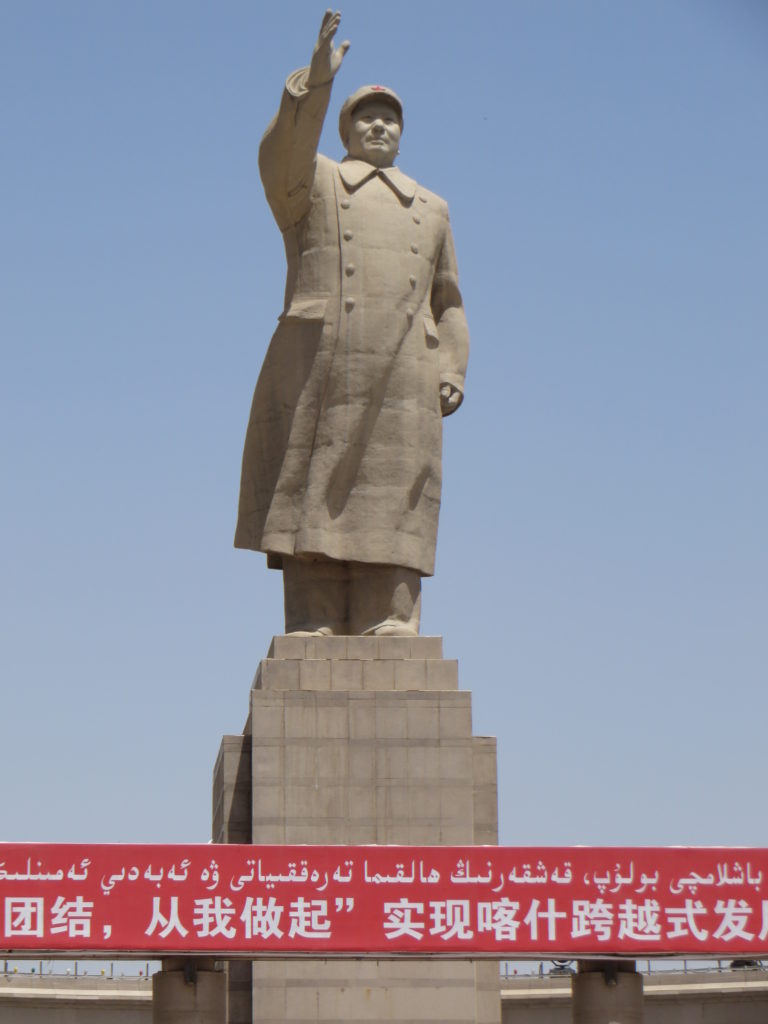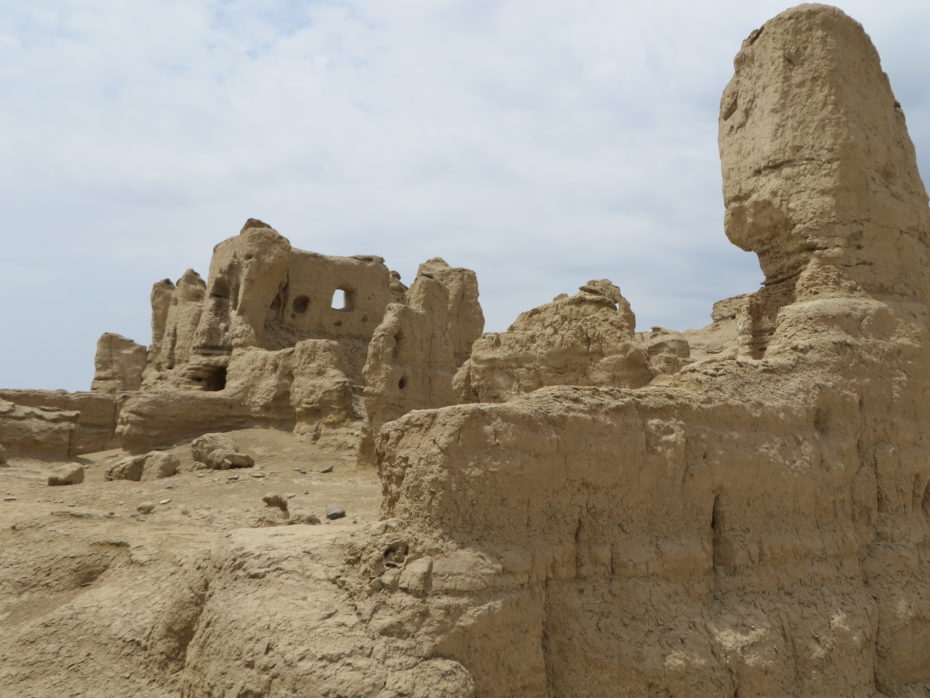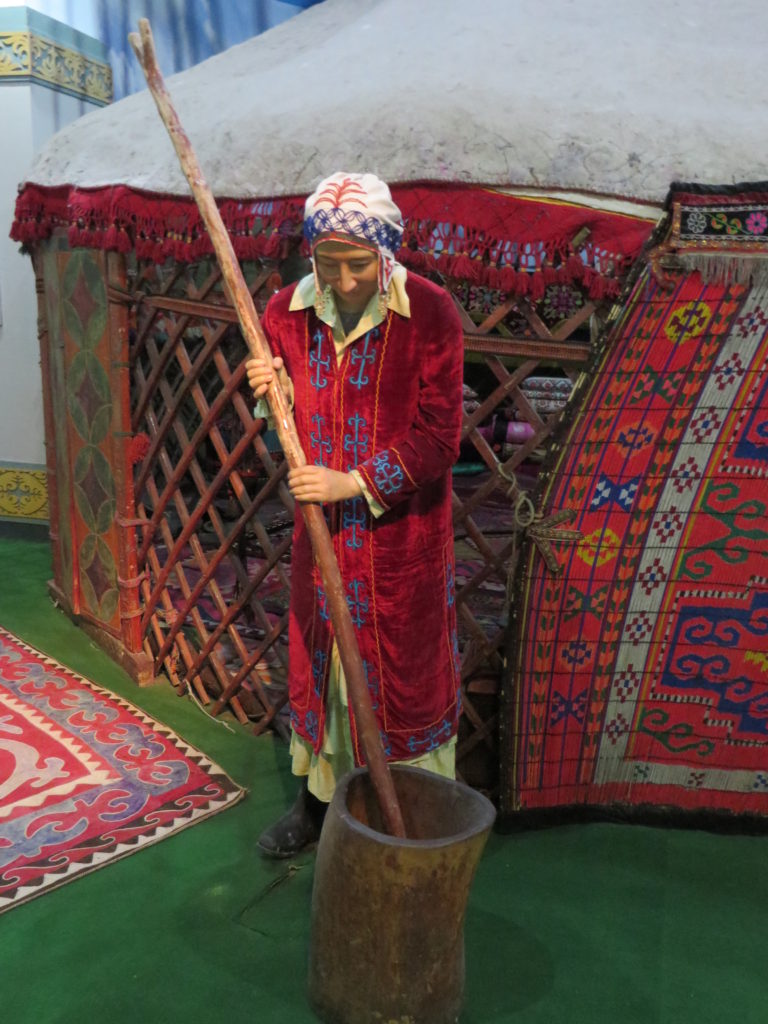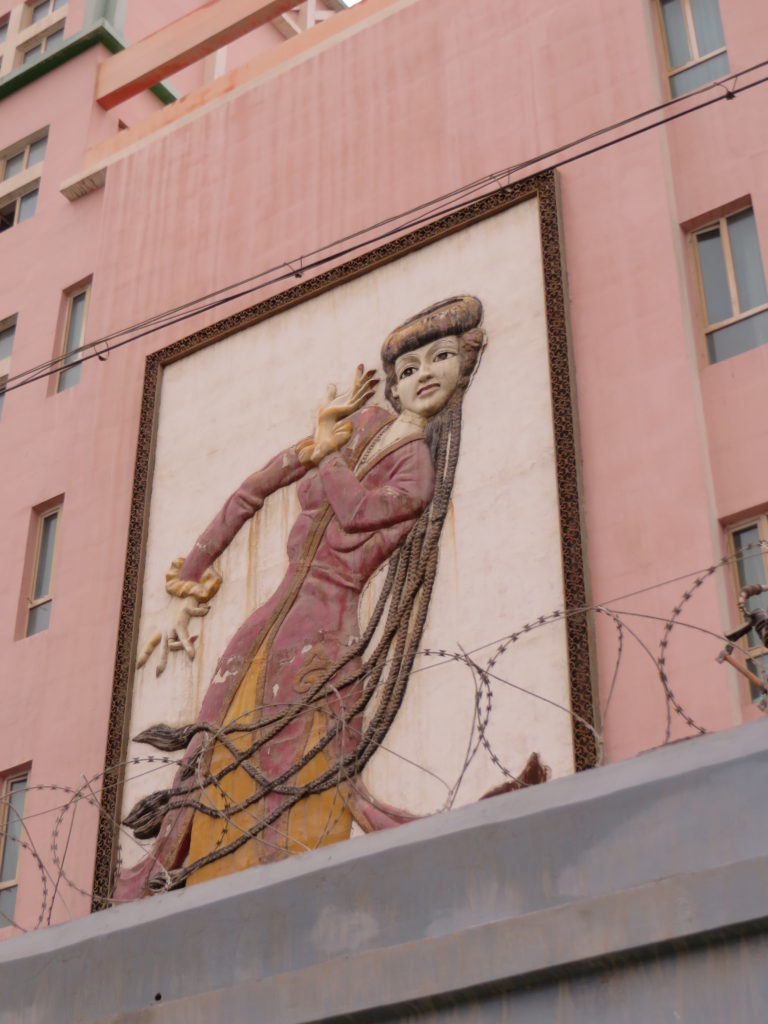IMPORTANT NOTE – in the many years since writing this piece my understanding of the situation has evolved. I hope to resolve my misunderstandings with a future visit to the region but until then I am content to leave this here to receive any constructive comments
With free entrance, quality exhibits, largely comprehensible English information and staff out numbering visitors, the museums in Xinjiang offer, at first glance, a quality experience outstripping the majority of that of their Central Asian counterparts. Closer inspection of the exhibit explanations soon reveals the struggle of competing objectives: trying to represent an accurate portrayal of history and conforming to the government’s historical narrative which it uses to justify its policies in the region. The key part of this narrative is that the region has been an integral part of China since the rule of the Han dynasty from 206BC to 220AD. The validity of this statement can be succinctly summarised in the expression, “utter horse shit”.
Firstly, there is the basic problem that following the departure of the Han Dynasty to more recent times, many periods of centuries have happily come and gone with no sign of a Chinese Empire. Secondly there is the issue with the concept of saying you rule in a vast, often barren region where, until cars, trains and aeroplanes arrived on the scene it could be weeks before you learnt that say, your garrison had been massacred and another few weeks before you could get enough people there to do anything about it. At times “Chinese rule” meant little more than having the odd fort with a few soldiers dotted around the countryside. As with much so-called rule throughout Central Asian history it was more sustained thorough often short-lived treaties and mutual agreements between competing powers, where it suited a regional ruler to offer allegiance to a neighbouring or distant empire without submitting to direct rule. Finally we are left with the practical realities of creating policies based on spurious interpretations of two thousand-year old history, look what a splendid contribution to world peace the formation of the state of Israel has been.
Like all empires throughout history their claim to ownership has only ever been determined by military invasion after some bloke turned up and raised a flag in the name of a far off ruler, who was never going to dirty their slippers by actually going there. Even the supremely arrogant British Empire had realised by the end of WWII that this was hardly a tenable excuse to rule in the modern world. China conveniently ignores that it denies other countries the same logic: its own Yuan Dynasty was created by the Mongols after their invasion, hence giving modern Mongolia an equally legitimate claim to rule China. Tibet had also invaded parts of China and Xinjiang at various periods and the museum at Dunhuaang even refers to the Tibetan invasion, rather inconveniently demolishing that other Big Lie that Tibet is a part of China, after all you can hardly be invaded by yourself. Unless you have been living in a particularly remote cave for the last fifty years I scarcely need remind you that Tibetans are hardly in a position to reclaim their rightful territories in China.
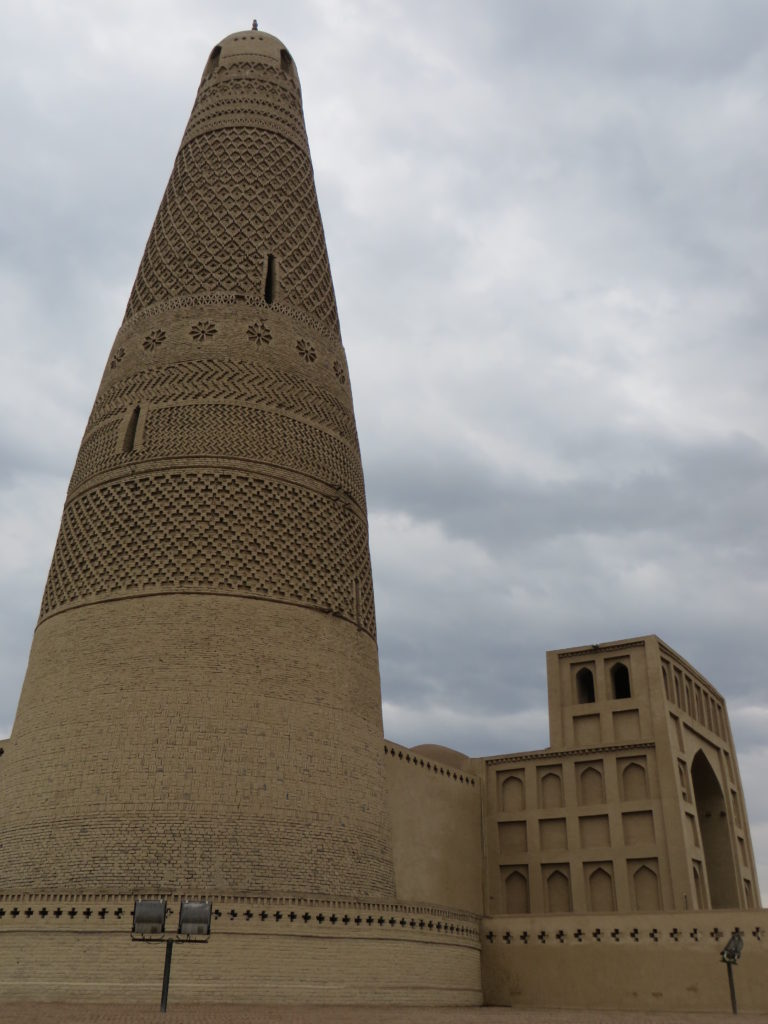
Emin minaret near Turpan – named after Emin Khoja who unlike most Uighur rulers signed a treaty with the Qing dynasty and so, unlike the others is allowed a place in history
The museums often skillfully tackle the underlying contradictions by hinting at things whilst neglecting the whole extent of the story. In Urumqi Museum a mummy from the ancient city of Niya is celebrated for its fine clothes of silk with Chinese characters, omitting to mention that the body it clothes is Caucasian and in all likelihood was displaying his ostentatious wealth by wearing exotic foreign clothes rather than any fealty to Chinese rule. It and most other exhibits are dated by which Chinese dynastic period they fall under, regardless of whether they had anything to do with the dynastic rule. Exhibits depicting the myriad of scripts which have existed in Xinjiang, particularly those of an official nature raise the question, why wasn’t any of this business being done in Chinese?
Perhaps the most loaded term used is, probably unsurprisingly, ethnic minorities. Often it actually means the indigenous ethnic majority, only demoted to minority status by Chinese invasion, or genocide in the case of the Jungars, in a convenient process of historical revisionism. In fact it has been continued to the present day by the government backed immigration of Han Chinese to Xinjiang. The official view is that all the minorities are part of the one big happy family of a united China, when in fact many forms of cultural expression are ruthlessly suppressed because it is seen as part of a “separatist” agenda. Museums perpetuate charming picture post card vignettes of these cultures: all happy natives singing and dancing in traditional dress; women doing embroidery and basket weaving, men herding goats and hunting. Uplifting adjectives abound in descriptions of minority life: joyous, proud, free, unique. Outside of museums, posters, murals and education reinforce this myth of compliant peoples with their quaint traditions.
Principal victims of this rebranding of culture are the Uighurs, now almost overtaken in numbers by Han Chinese, who by a large margin disproportionately benefit from government investment, jobs and political placement, creating huge resentment. Further exacerbated by violent state repression this resentment has tragically fuelled a terrorist response, which has only ratcheted up the state’s heavy-handed security measures and led to further infringement of cultural expression. Being predominately Muslim it is religious restrictions that have particularly inflamed tensions. To give only two of the many examples, beards have been effectively outlawed and demands to cease fasting during Ramadan have been made. Beards may only be good practice, as exemplified by the prophet Mohammed but fasting is one of the Five Pillars of Islam (http://www.islam101.com/dawah/pillars.html), mandatory for all Muslims, hence any restriction on it is seen as an attack that goes to the core of the faith. If anything, this has only hardened the resolve of Uighurs to defend their religion and pass it on to their children. The flourishing of religion in the countries of the former Soviet Union is ample evidence that religious suppression doesn’t work and can leave lingering bitterness, lasting generations.
The destruction of Tibetan culture may have gained much international exposure but the assault on Uighur culture is no less insidious. With some having resorted to terrorism the international community has deliberately looked away for fear of jeopardising trade deals and the like with China.
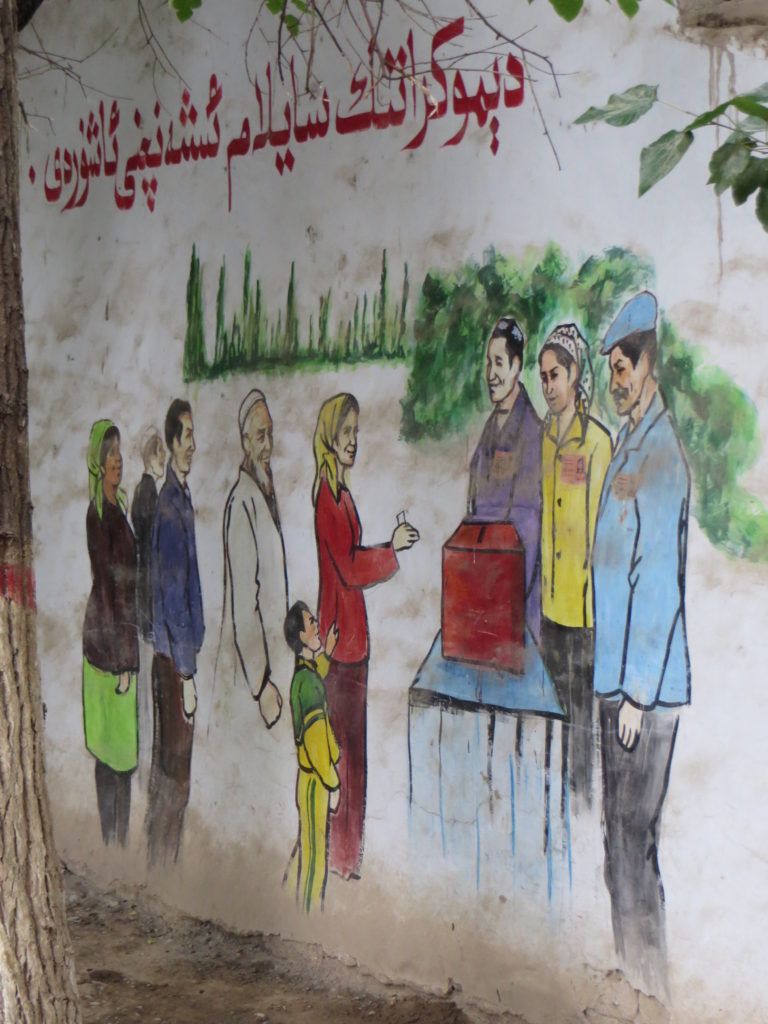
The first word above this image is, democratic, which means that the rest of the message is certainly complete bollocks (no doubt many of you will be more familiar with the Uighur language than me so feel free to correct my interpretation)
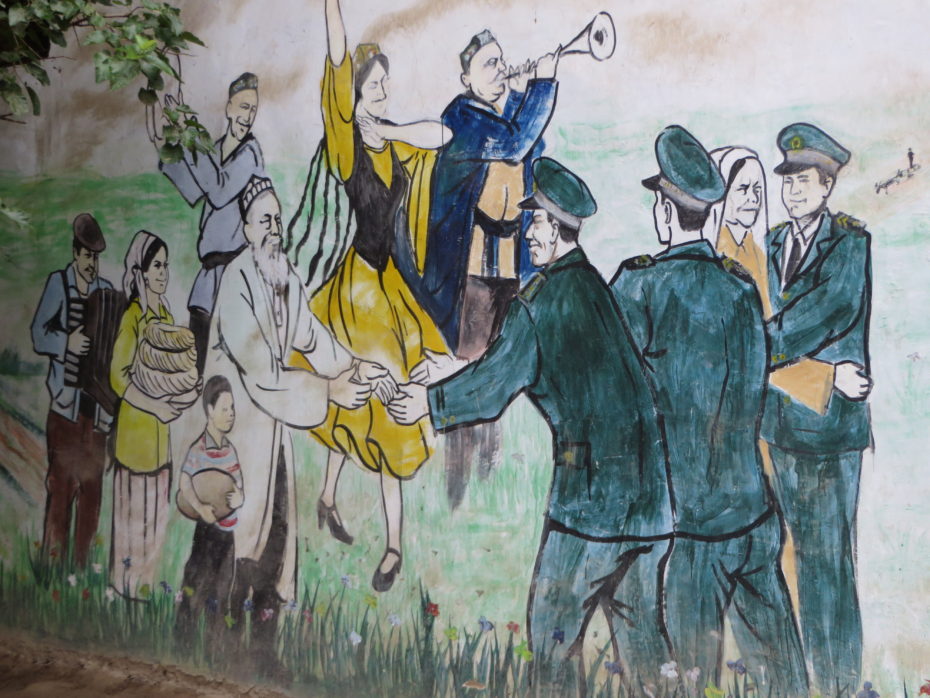
The imaginary world of the Chinese government, where the lovely policemen are having a jolly time with their singing and dancing ethnic friends, rather than demanding their ID card then beating the crap out of them
You don’t have to spend long in the region to realise that violence sits uneasily with the average Uighur, the sincere welcome for foreign visitors is typical of Central Asian friendliness but there is little warmth for the Chinese and only limited interaction occurs between the two communities, government actions only continue to alienate them. Any journey on the roads of Xinjiang is interrupted by ID and bag checks. These and other “security” measures may well at times be justified in the short-term but will inevitably grate as time goes on further adding to the sense of injustice. With the government showing no inclination to ease its repressive practices and rewrite the Big Lie there is little hope for a peaceful future.
The Chinese have much to be proud of in their long history, with a continuity, perhaps unequalled anywhere, artistic treasures and scientific advances which at many times have put the West to shame. Any country has the right to use its museums to boast of its proud past and few countries will be entirely open about shameful exploits of past empires but when the past is manipulated to justify the present a museum ceases to be a museum and becomes a propaganda tool.




